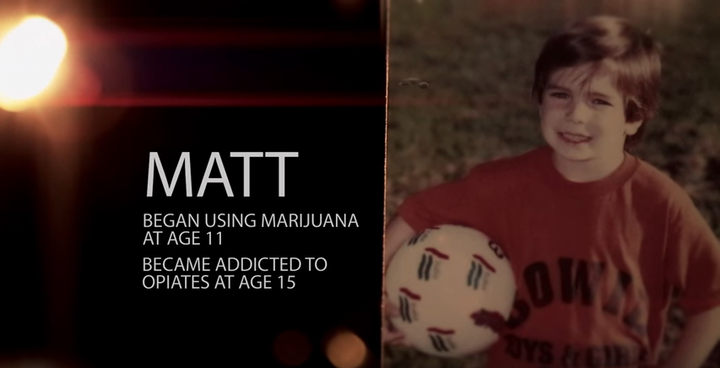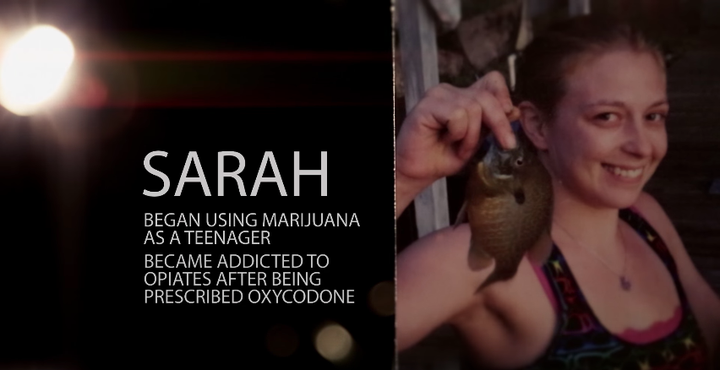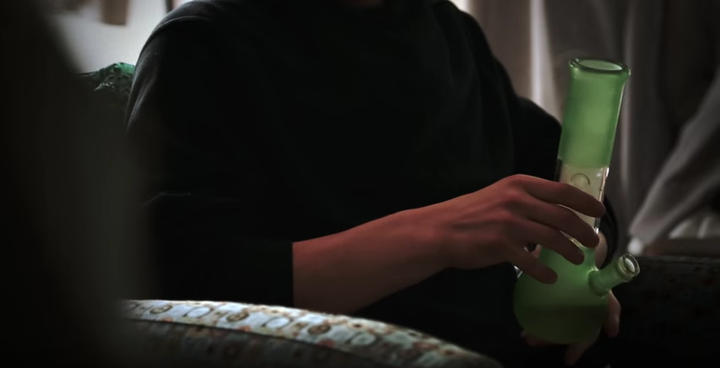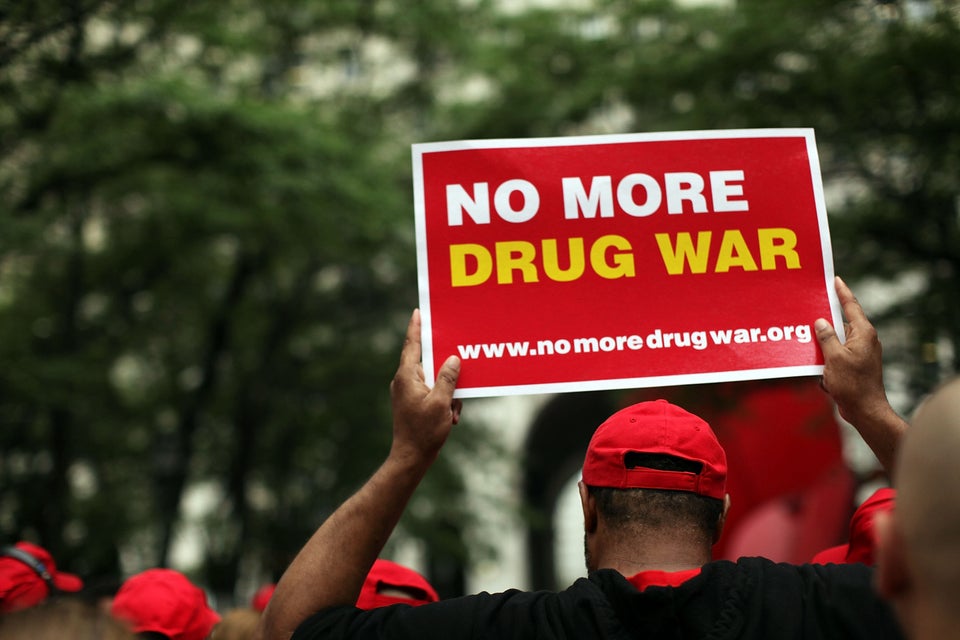Last week, the FBI and DEA released "Chasing the Dragon," a documentary that paints an honest, unforgiving picture of opiate addiction's devastating, often deadly consequences. As the opioid epidemic continues to rip through communities across the U.S., it's part of a new effort by the sister law enforcement agencies to convince teens to steer clear of prescription painkillers and heroin at all costs.
The film is "aimed at youth," which may explain the awkward attempt to come up with a cool-sounding title, borrowed from Cantonese slang for smoking opium or heroin. By offering an intimate look at the lives of people who have struggled with opiate addiction, the movie quickly makes it clear that these drugs are incredibly serious.
As it should: Nearly 30,000 people died of heroin and prescription painkiller overdoses in 2014, the latest year for which data is available. These numbers are rising at an especially frightening pace among heroin users, who are increasingly turning to cheaper and dirtier illicit drugs after starting with prescription pills. A third of Americans now say that they personally know someone who has been addicted to heroin or another opiate, according to a recent HuffPost/YouGov poll.
But the FBI and DEA were apparently not satisfied just using the available fodder to both terrify and educate teens about the opioid epidemic and the ravages of addiction. Instead, the agencies quickly try to link these harder drugs to marijuana use.
Yes, marijuana.
The tragedy of the DEA and FBI's obsession with pot is that it muddies an otherwise necessary message. There is plenty to be concerned about when it comes to marijuana policy. Are edibles being labeled properly? Are shops improperly marketing to teens? But one thing is sure: Marijuana is not annihilating an entire generation, it is not killing tens of thousands of people a year -- and it is not the cause of the heroin crisis. People have been smoking pot at more or less stable rates for decades now, but the opiate crisis only exploded after Big Pharma flooded the market with pills.
"Chasing the Dragon" invokes weed at least seven times in the first 15 minutes. From the onset, it pushes the "gateway drug" theory, noting that many of the film's subjects used marijuana at some point before moving on to opiates.

What does marijuana have to do with Matt's opiate addiction? He says he got arrested at age 15 for drinking a beer at a concert, which got him put on probation and subjected to drug testing. Since he was unable to smoke pot, a friend told him he should take an oxycontin. He continued to steal prescription drugs from his friends' houses until he got addicted to opiates and eventually to heroin. (If anything, the DEA inadvertently makes the argument for legalization with this example. Had Matt had legal access to a less harmful substance, perhaps he would have been better off.)
According to the repeatedly debunked gateway drug theory, marijuana use drives people to experiment with harder and harder drugs. Eventually, they'll end up taking opiates or shooting up heroin. Despite the suggestion, that's not what happened to Matt.
Nor is it what happened to Cory.

Cory says nothing about how marijuana fit into his eventual opiate addiction. He says his experimentation with painkillers eventually led him to get addicted to heroin.
In other examples, "Chasing the Dragon" makes its initial focus on marijuana seem even more insignificant.

Melissa was 22 when she first used opiates, nine years after she first used marijuana. She had just given birth to her first child, and her doctor prescribed her oxycontin to manage the pain. When she couldn't get pain pills legally anymore, she began buying them on the street. She eventually turned to heroin, which was cheaper and more easily available.
Sarah tells a similar story, as do other subjects in the film.

Their opiate use began legally, setting them off on a downward spiral of addiction, which led to harder drugs and increasingly self-destructive behavior.
Weed paraphernalia and other imagery is also interspersed throughout "Chasing the Dragon," adding to the narrative that being around marijuana use -- or engaging in it yourself -- will necessarily expose you to the irresistible lure of opiates.

The focus on weed is a shame, because the FBI and DEA's attempt to make such a link doesn't mean the film is being dishonest about the severity of the opioid epidemic -- even if its fearmongering approach leaves little room for a nuanced discussion about addiction and its causes.
Opiates destroyed the life of each subject in "Chasing the Dragon" in one way or another. Some lost their children, friends or significant others. Others went to horrific lengths to feed their addiction, subjecting their bodies to unimaginable pain and punishment. Almost everyone ended up in prison because of their drug use.
In an attempt to further scare its viewers, the film suggests this is an inevitable result of opiate addiction, while at the same time proving that incarcerating people is an ineffective way to treat addiction itself. A number of subjects were released from prison, only to get locked up again after returning to opiate use. Some were able to find success in recovery only after entering treatment, an option that the film only covers in passing.
It's perhaps not shocking that the FBI and DEA would make an effort to link marijuana and the opioid epidemic. After all, according to federal law, weed and heroin are both Schedule I drugs, considered the most dangerous of all substances. DEA chiefs haven't always even been completely clear on whether heroin is more dangerous than marijuana. And for years, federal agencies have used a variety of tactics, often based on fear and misinformation, in hopes of keeping teens from using pot.
They have, for the most part, been unsuccessful. Marijuana use has remained steady among high schoolers over the past five years, while the perceived risks have only decreased. In 2015, nearly 35 percent of 12th-graders said they'd used marijuana in the past year. Around 32 percent of respondents said regular marijuana use puts users at great risk of harming themselves physically or otherwise, compared to 78.6 percent in 1991.
These failures speak to the need for a new approach to drug education, and, in the case of opiates in particular, one that doesn't conflate the message about harm or gateways to use. Linking these risks in any way to marijuana, a drug that many teens now believe has been unduly demonized by adults, will only make them skeptical of the important underlying message: That opiate addiction can affect anyone, regardless of their personal background or prior drug use.
Also on HuffPost:

